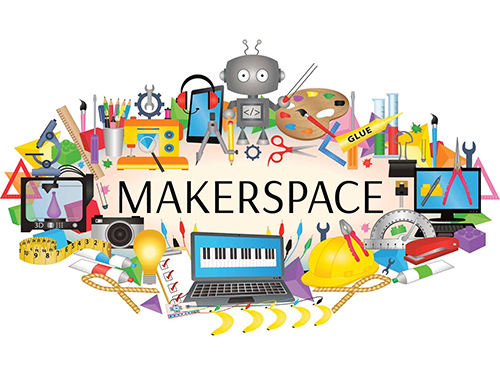
07 Dec 2020 – Osman Bedel –
Unleashing Creativity and Innovation: The Power of Makerspaces in Education
In an era where creativity, critical thinking, and innovation are highly valued, educators are continually seeking ways to foster these essential skills in students. Makerspaces have emerged as dynamic learning environments that provide students with opportunities to explore their creativity, engage in hands-on activities, and unleash their innovation. Equipped with a diverse range of tools and materials, makerspaces empower students to become problem solvers, critical thinkers, and budding engineers. In this blog post, we will delve into the concept of makerspaces, their significance in education, and the skills they foster in students.
Defining Makerspaces
Makerspaces are physical environments within educational settings where students can engage in creative and hands-on learning experiences. These spaces are designed to facilitate exploration, experimentation, and the development of new ideas through the use of various tools, equipment, and materials. Makerspaces encourage students to embrace a do-it-yourself (DIY) mindset and engage in activities that blend science, technology, engineering, art, and mathematics (STEAM).
Key Elements of Makerspaces
-
Hands-on Learning: Makerspaces emphasize learning by doing. Students actively engage in designing, building, and iterating on their projects, enabling them to gain practical experience and apply theoretical knowledge in a tangible way.
-
Tools and Materials: Makerspaces are equipped with a diverse range of tools and materials, such as 3D printers, electronics, woodworking equipment, craft supplies, and programming tools. These resources empower students to turn their ideas into reality and encourage experimentation and innovation.
-
Collaboration and Peer Learning: Makerspaces foster a collaborative and inclusive environment. Students work together, sharing ideas, expertise, and feedback. Collaboration encourages communication, teamwork, and the exchange of diverse perspectives, enhancing the learning experience for all participants.
-
Creativity and Innovation: Makerspaces provide students with the freedom to explore their creativity and unleash their innovative ideas. By encouraging open-ended projects, students are encouraged to think outside the box, take risks, and develop inventive solutions to problems.
Benefits of Makerspaces
-
Hands-on Skill Development: Makerspaces provide students with practical, hands-on experiences that develop a wide range of skills. As students engage in designing, building, and iterating on their projects, they enhance problem-solving, critical thinking, and spatial reasoning abilities. They also develop technical skills in areas such as coding, electronics, woodworking, and prototyping.
-
Creativity and Innovation: Makerspaces nurture creativity by giving students the freedom to experiment, take risks, and explore new ideas. The process of creating projects from scratch fosters innovative thinking, as students learn to identify problems, brainstorm solutions, and iterate on their designs. This mindset of creativity and innovation extends beyond the makerspace and prepares students to tackle real-world challenges.
-
Empowerment and Ownership: Makerspaces empower students by providing them with a sense of ownership over their learning. As they design and build their projects, students develop a sense of pride and accomplishment. They become active participants in their education, taking charge of their learning journey and developing self-confidence and self-efficacy.
-
Collaboration and Communication: Makerspaces encourage collaboration and communication among students. Working together on projects allows them to share ideas, pool their expertise, and solve problems collectively. Collaboration enhances interpersonal skills, such as teamwork, communication, and empathy, which are crucial for success in various aspects of life.
-
Career Readiness: Makerspaces help students develop skills that are highly valued in the 21st-century workforce. The hands-on nature of makerspace activities aligns with real-world problem-solving and innovation. The skills students acquire in makerspaces, such as critical thinking






